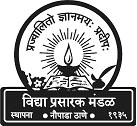Hotrod
Continent
By Phil Berardelli
ScienceNOW Daily News
17 October 2007
You might
not consider an object that takes a whole year to move the distance
between your outstretched thumb and pinky to be a speedster, but in
the field of plate tectonics, that's zipping along like a Formula One
racer. The continental plate that comprises the Indian subcontinent
once was such a mover, and now a team using a cutting-edge seismic method
thinks it has figured out why.
Earth's rocky crust, or lithosphere, is made up of 14 massive plates
that float atop the planet's semimolten mantle and make up the major
landmasses and ocean basins. Five of these tectonic plates are the progeny
of one--a giant plate known as Gondwanaland, which began to break up
about 140 million years ago and eventually gave rise to Africa, Antarctica,
India, Australia, and South America. Most of these fragments moved away
from one another at about 5 centimeters per year, taking millions of
years to arrive at their present locations. But the Indian plate raced
along at 20 centimeters per year and eventually slammed into southern
Asia with so much force that the collision gave rise to the Himalayas,
the highest mountain range on dry land.
What enabled
the Indian plate to move so fast? An Indian-German team may have discovered
the answer: The plate is considerably thinner than its Gondwanaland
siblings. Using a new technique called S-wave receiver function, which
can distinguish how long seismic waves take to travel through the lithosphere
versus through the underlying semimolten layer called the asthenosphere,
the researchers were able to compute plate thicknesses by comparing
the travel times of the waves. Readings obtained by 35 monitoring stations
indicate that the Indian plate is 100 kilometers thick, only one-third
as thick as other pieces of the former supercontinent, the researchers
report tomorrow in Nature.
Plumbing
the continent's depth was no easy task. "These are very weak signals
in seismic records, and many high-quality seismic data must be available
for a reliable observation," says geophysicist and co-author Rainer
Kind of GeoForschungsZentrum, an earth science institute in Potsdam,
Germany. The researchers think the Indian plate is so thin because,
when it was part of Gondwanaland, it lay over a particularly hot zone
of the asthenosphere that melted its deeper roots. The thin plate was
then able to slide more easily across the mantle.
The paper
is particularly interesting because it connects the thickness of a plate
to the speed at which it can drift, says geophysicist Jason Phipps Morgan
of Cornell University. "If true," he says, "this will
be very important in how we think about the links between surface plate
motions and deep mantle convection." Geophysicist Michael Steckler
of the Lamont-Doherty Earth Observatory in Palisades, New York, says
he's so impressed with the clarity of the S-wave data that he'd like
his collaborators to apply the technique to their own studies of continental
plates. Combined with other data, Steckler says, "the conclusion
that India once had a root that is now gone is solid--all plates are
not created equal."
